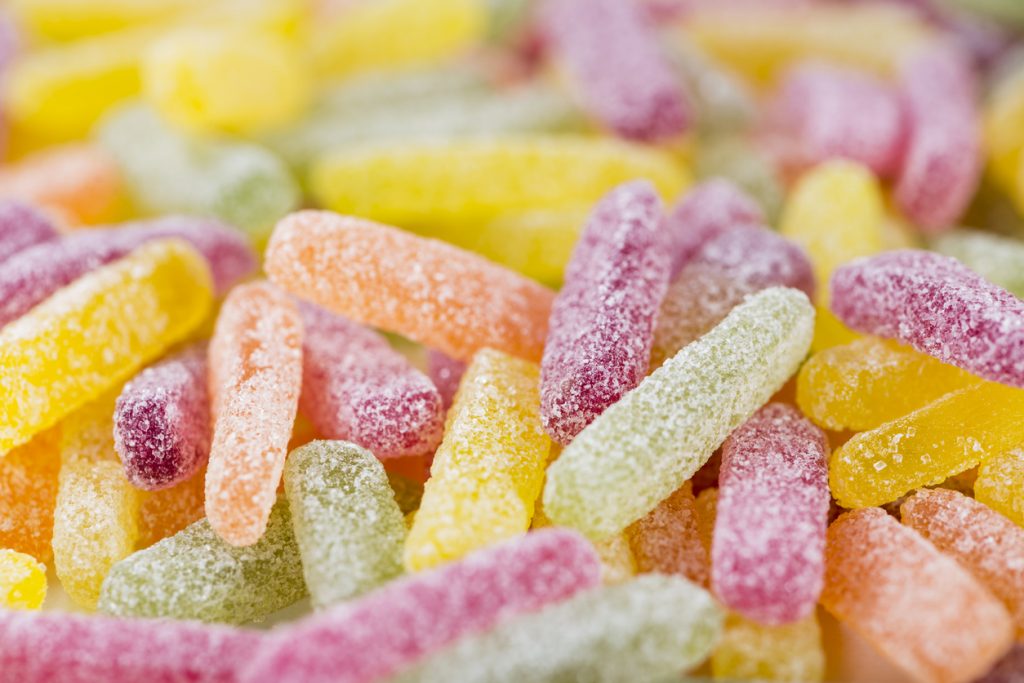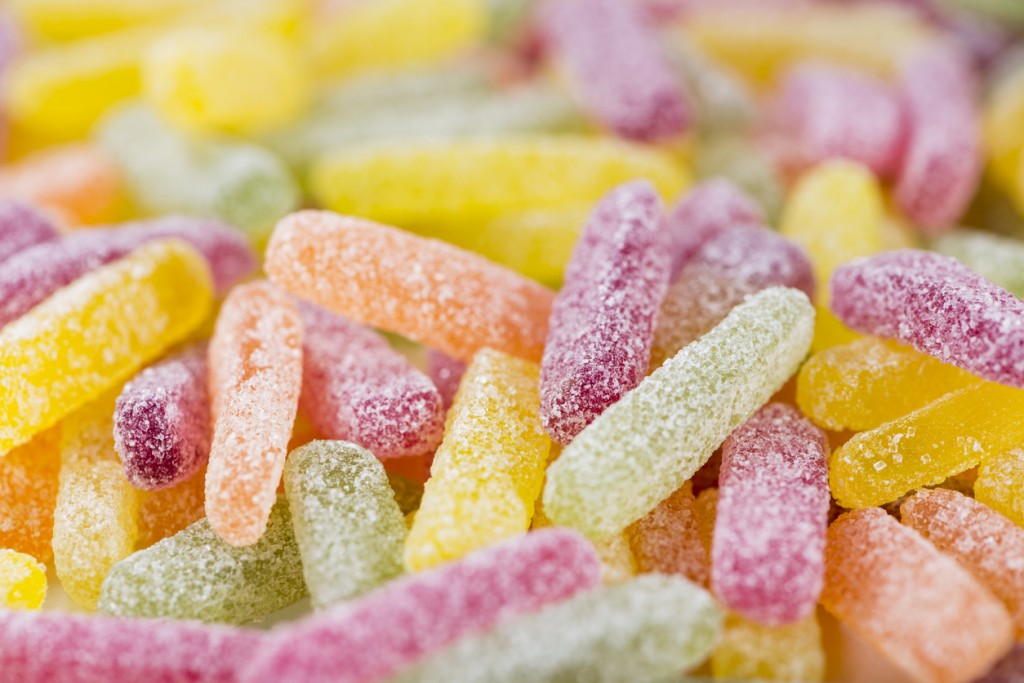It shouldn’t be so pleasurable but it is: That bizarre taste sensation of super-sour and super-sweet that comes with sour candy. Here’s the science behind how candy makes can make things taste so sour.
The main supplier of sour kick: citric acid. It’s found in, well, citrus fruits: lemons, grapefruits, limes, and oranges, for example. But to make mass production levels of it for sour candy, food scientists ferment sugar with microorganisms, which results in a very bitter/very sweet compound. Citric acid does double duty with sour candy. It’s also commonly used as a food additive, because it prevents food from spoiling and also helps artificially colored foods maintain their appearance.
Smoothing out that sour punch with a more mellow, balancing tartness is malic acid. It’s a naturally sour compound that’s found in nature, most commonly in green apples—it’s why green apples taste far tangier than red ones. (It’s also found in cherries, apricots, and tomatoes.) But food scientists can stack up tons of malic acid, whether naturally occurring or lab-created, and used it to make foods like sour candy incredibly sour.
One downside of citric and malic acids: They dissolve quickly and the flavor doesn’t last long. To make the sour flavor last far longer than it should, some candy makers include fumaric acid. Found naturally in small amounts in apples, carrots, and tomatoes, it provides an extremely sour taste but serves mainly to keep the sour alive for a little while longer.
Cinnamon-flavored sour candy like Atomic Fireballs pack an active ingredient called cinnamaldehyde. That’s an oil found naturally in cinnamon. Small to moderate amounts provide a pleasant cinnamon flavor—it’s why cinnamon tastes like cinnamon. But when it’s isolated, extracted, and/or synthesized and used in huge amounts it provides that face-puckering sour-candy sensation. That’s because cinnamaldehyde in larger quantities irritates a protein present in the human mouth called TRPA1. Its sole job is to sense irritants and tell the brain that the mouth is eating something it shouldn’t be eating.
Eating sour foods triggers a response in the taste buds, which release chemical compounds that then send a message to the brain. There, serotonin—a mood-regulating compound that also aids in appetite and sleep—is released. In other words, serotonin helps the tongue, nerves, and brain all understand that the sour candy is, in fact, “sour.”

How Sour Candy Works








